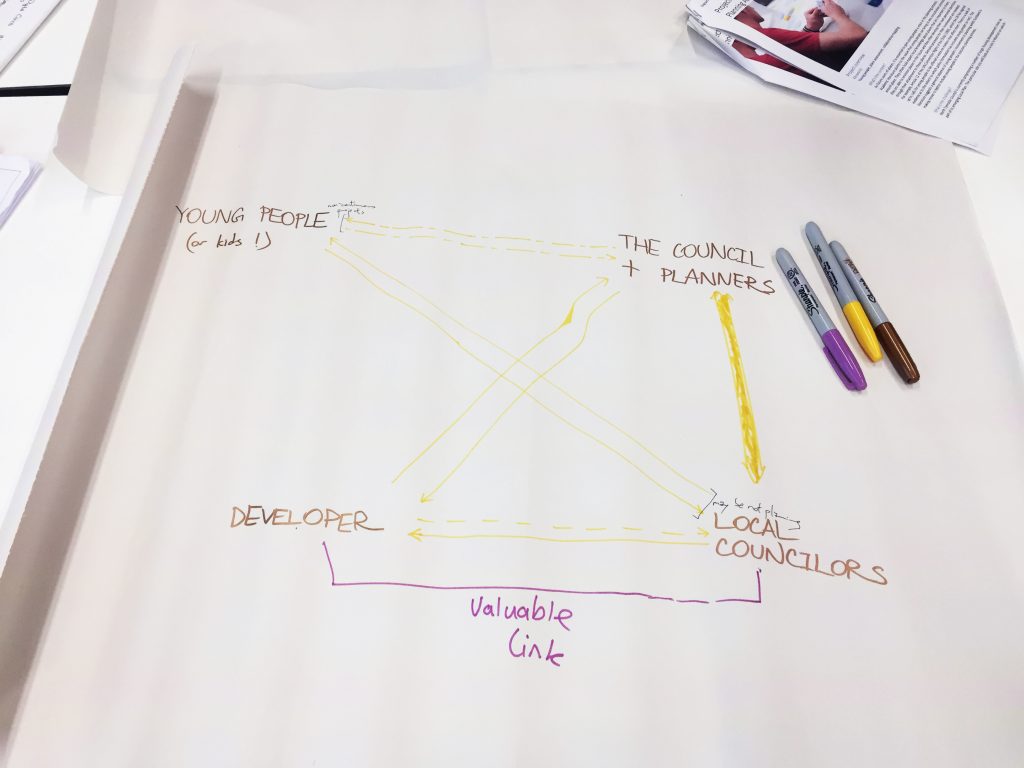After the first two weeks of setting our goals, meeting our client for the first time, working out the links between stakeholders and getting prepared for an interview, it was time to get the project really moving in a direction which we were all happy and comfortable with.
On the 19th October, the group went to meet 3 members of the Youth Council alongside their mentor. We had taken aboard comments and advice about the questions we were going to ask so we were confident with what we had prepared. We opened the meeting by asking if it was ok to audio record to make sure we had all the information we needed and didn’t miss anything if we wanted to go back and check details. Each member of the group introduced ourselves and we started off by talking to the members of the Youth Council about the plot of land in Murton and what they felt was needed in the future for the area to strive, looking at a map showing North Tyneside and the existing services. The user representatives were very aware on the matter of green space and keeping it protected as much as possible. They also commented on the existing road systems and how they thought some new roads connecting Murton to Monkseaton would be beneficial as the new houses that the developers are planning to build will need road links to help tie together the new built homes and services. Leisure centres and swimming pools were talked about briefly to give the community some recreational use as there are no existing establishments in close proximity. The other topic mentioned was ‘allotments’ and the high demand in North Tyneside for the spaces. As it was commented that the community members wanting an allotment would have to wait several years on the waiting list, so looking to include these would be a massive positive for the community.
The meeting progressed really well and it flowed naturally, we tried to work from our question structure and linked it making it more personal to the clients. The user representatives started telling us about their roles and how they got into it. It was really beneficial as we learnt how it was all voluntary and due to an interest in helping their community and the rewarding feeling they all got. Something we felt was an important issue, was that the Youth Council felt unheard and didn’t have a voice when involved with the developers. We asked about their communication and were informed about the lack of it and how they never engaged with the youth council. The interview then naturally developed through talking about communication to how the use of modern technology affects our lives and how they used it and what did they use it for. It was the turning point in the interview as we started talking about how reliant on phones and technology people are nowadays. It was a key comment about how each of the user representatives all agreed that young people would be more involved in planning and the process it goes through if it was communicated easily through technology and smartphones. It was the confirmation we needed to know that the clients were on the same page as us.
After discussing various ways to get young people more involved with the use of technology, a couple of ideas arose. For example, it was mentioned about QR codes and how it would be easier for someone to just scan in the code to read the information later in their own time rather than stand on a street in the cold trying to read a piece of paper, in which we all agreed it was a much more efficient way to deliver information. This followed on with discussions about the engagement levels and making a product that was quick and easy to use, that could be visually pleasing and straightforward to make choices and voice your opinions.
We were really happy with what we had learnt in the interview and just how aware these young planners were. It was very beneficial and each of us took a lot away from the meeting with multiple ideas about how we are going to move forward and start to think about possibilities of technological products to make the young people of North Tyneside more involved in the planning process.
